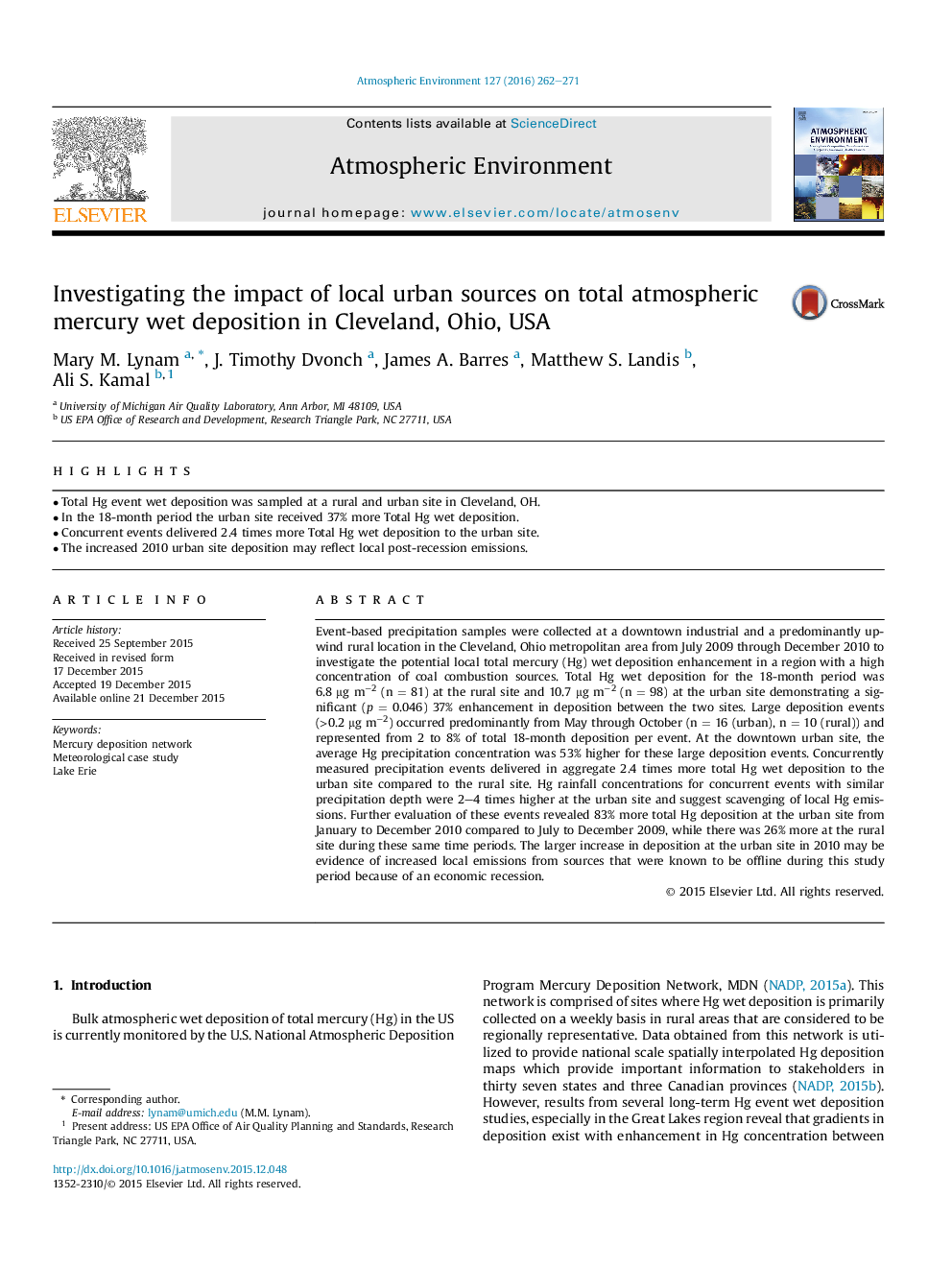| Article ID | Journal | Published Year | Pages | File Type |
|---|---|---|---|---|
| 6336895 | Atmospheric Environment | 2016 | 10 Pages |
Abstract
Event-based precipitation samples were collected at a downtown industrial and a predominantly upwind rural location in the Cleveland, Ohio metropolitan area from July 2009 through December 2010 to investigate the potential local total mercury (Hg) wet deposition enhancement in a region with a high concentration of coal combustion sources. Total Hg wet deposition for the 18-month period was 6.8 μg mâ2 (n = 81) at the rural site and 10.7 μg mâ2 (n = 98) at the urban site demonstrating a significant (p = 0.046) 37% enhancement in deposition between the two sites. Large deposition events (>0.2 μg mâ2) occurred predominantly from May through October (n = 16 (urban), n = 10 (rural)) and represented from 2 to 8% of total 18-month deposition per event. At the downtown urban site, the average Hg precipitation concentration was 53% higher for these large deposition events. Concurrently measured precipitation events delivered in aggregate 2.4 times more total Hg wet deposition to the urban site compared to the rural site. Hg rainfall concentrations for concurrent events with similar precipitation depth were 2-4 times higher at the urban site and suggest scavenging of local Hg emissions. Further evaluation of these events revealed 83% more total Hg deposition at the urban site from January to December 2010 compared to July to December 2009, while there was 26% more at the rural site during these same time periods. The larger increase in deposition at the urban site in 2010 may be evidence of increased local emissions from sources that were known to be offline during this study period because of an economic recession.
Keywords
Related Topics
Physical Sciences and Engineering
Earth and Planetary Sciences
Atmospheric Science
Authors
Mary M. Lynam, J. Timothy Dvonch, James A. Barres, Matthew S. Landis, Ali S. Kamal,
